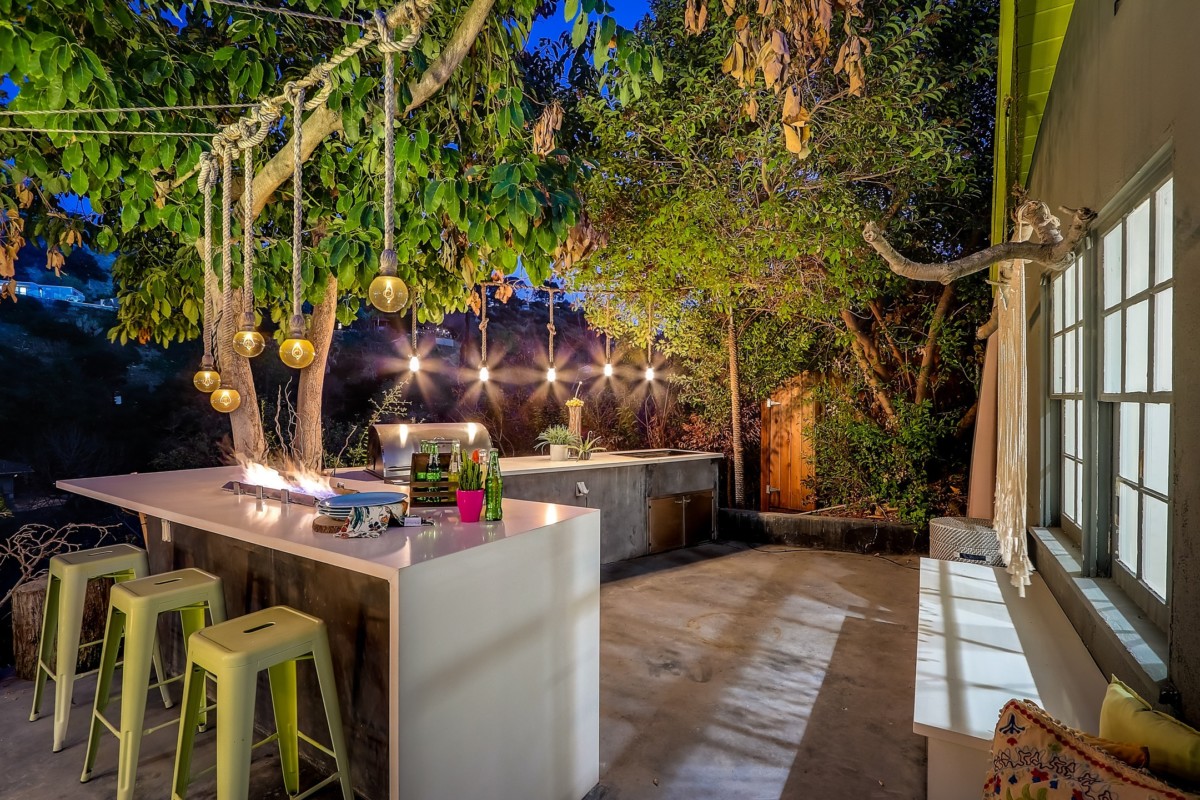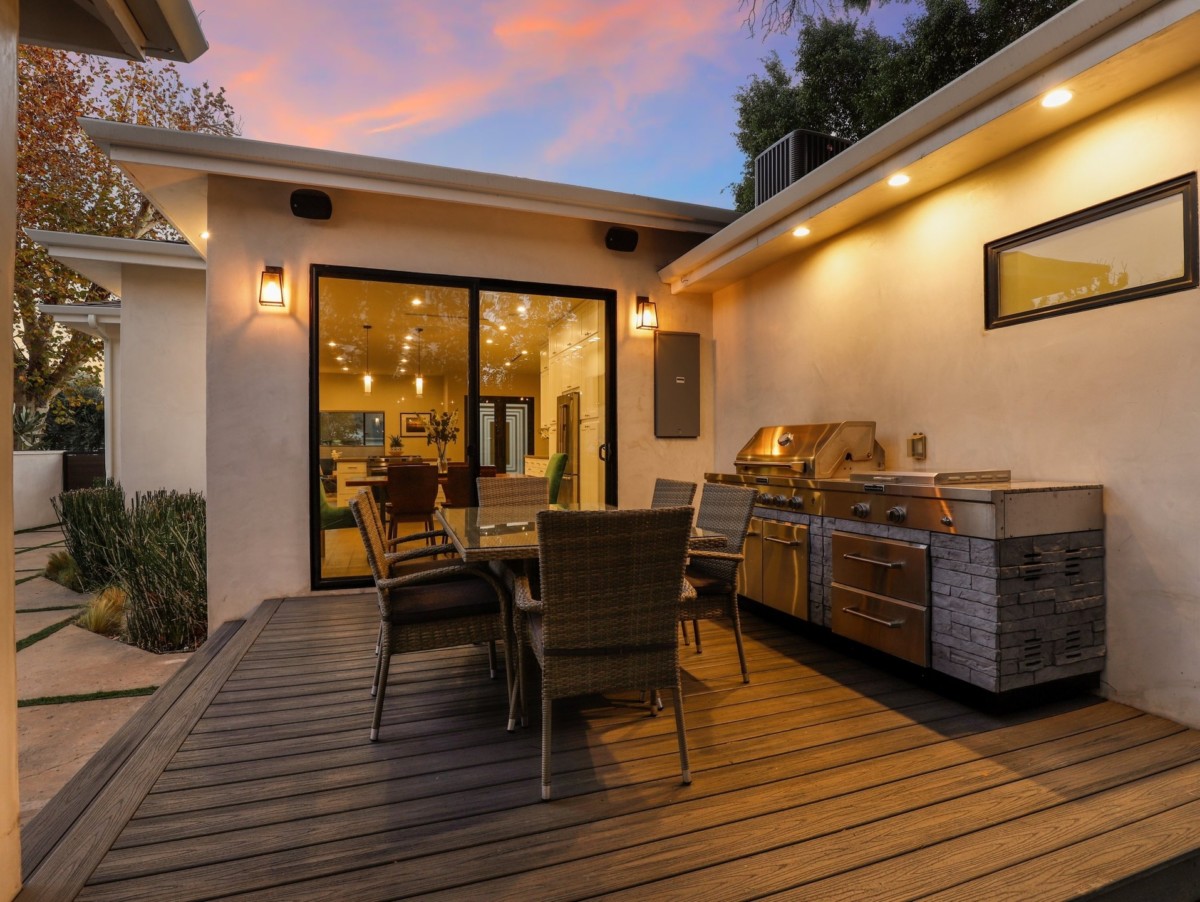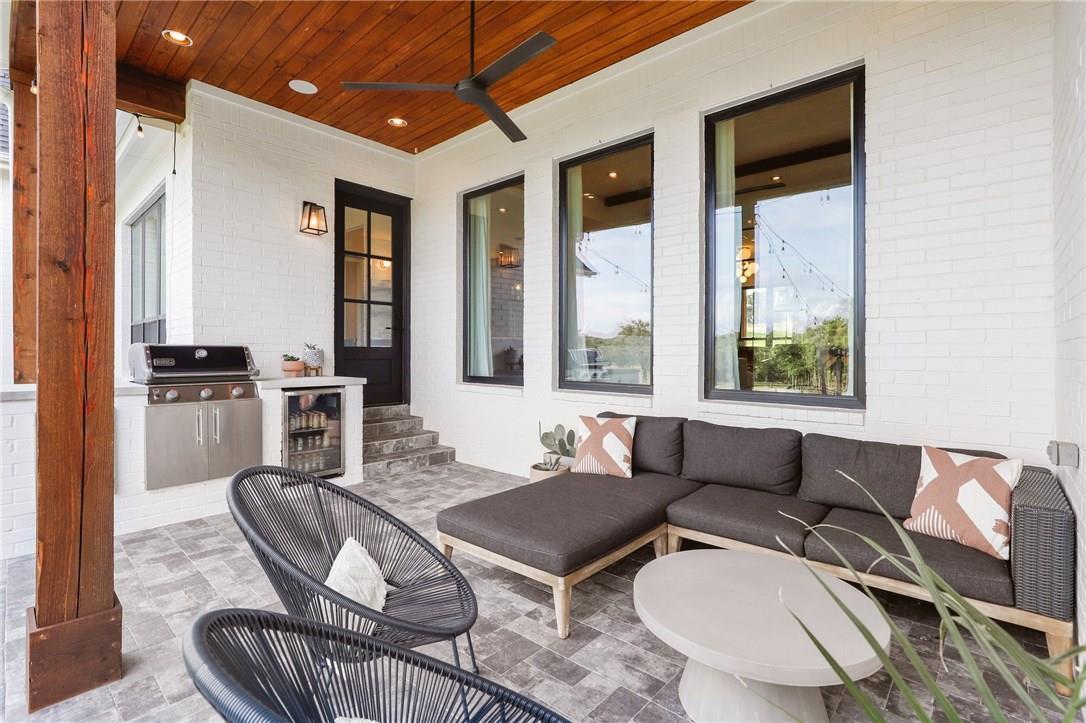How to Build an Outdoor Kitchen Perfect for Entertaining this Summer
An outdoor kitchen can be a fantastic addition to any home, making it possible to hold barbecues, pool parties, and picnics without having to cook indoors and miss all the fun. The right outdoor kitchen can help increase property values and boost satisfaction with added outdoor living space.
However, all outdoor kitchens aren’t made the same, and the wrong kitchen for your space can compromise your summer plans. Before charging ahead with building an outdoor kitchen, be sure you have a solid plan in place that ticks every box.

Choose a location for your outdoor kitchen
When picking a place to put your outdoor kitchen, consider proximity to pools, patios, or other favorite backyard features, accessibility from exterior doors, privacy from neighbors, storage and security, and ease of installation. Properties with large yards can offer plenty of areas to build an outdoor kitchen, but choosing the suitable space in your yard can make or break your outdoor living space.
Pro Tip: “You want to put the BBQ in a location facing the backyard, but most importantly, as close to the house’s back door as possible. People don’t realize how much back and forth they are doing between the kitchen and the BBQ while cooking.” – So Cal Builders & Design
Do your research or contact a professional before building out your outdoor space, or you’ll potentially find yourself with an awkward layout.
Determine features best for your outdoor kitchen needs
Every chef has individual preferences. Some love a gas grill, while others are dedicated to charcoal. An outdoor bar with kegs and taps may matter to summer party fans, while an ice chest for blending chilled drinks could be priority number one for others. Regardless, it’s critical to understand that an outdoor kitchen isn’t intended to be an equivalent of an indoor kitchen. Instead, it’s a separate space to meet unique demands and likely won’t be able to accommodate the same functions and appliances as inside spaces.
When planning your outdoor kitchen, know what priorities matter most to you. This can mean the flow of your cooking space, what appliances you’d like to have, prep space, storage space, any extra amenities you can’t live without, and the appearance of your outdoor kitchen.
Pro Tip: “Your backyard can be a perfect location to enjoy amazing weather without leaving your home. Build a custom pool with a beautiful porcelain tile around it, a custom BBQ, an outdoor putting green, or a nice fire pit.” – Green Advisor Construction & Development
Find the right contractor to work with you
The right contractor can be the difference between an amazing result and a failed project. Without someone who can see your vision and properly execute it, you may be left with a subpar outdoor kitchen that doesn’t meet your needs.
When vetting contractors, it’s essential to look beyond the basics, like price. Instead, be sure also to consider their experience with similar projects, the completion timeline, customer satisfaction, and creativity and flexibility.

Selecting proper outdoor flooring
Flooring isn’t often considered in exterior projects, but it can play a significant role in building an outdoor kitchen space. In an outdoor kitchen, flooring needs to be safe to use while cooking, easy to clean, weather-resistant, and in line with the style preferences that will guide the rest of your kitchen decor.
If you’re not sure what kinds of flooring are common in outdoor kitchens, speaking to your contractor can help you narrow your choices and determine the right avenue to take when choosing wood, tile, stone, or concrete flooring.
Shop for durable yet stylish outdoor countertops
Similar to choosing flooring, shopping for countertops is a decision that must be informed by style and functionality. Your outdoor counter needs to be the right size and shape for cooking expectations and in line with the overall look and feel you want from your outdoor kitchen.
And, like flooring, outdoor conditions need to be part of the evaluation process. Unless your outdoor kitchen is completely covered and closed off at all times, countertops must be able to stand up to rain, wind, hail, high heat, and potentially low temperatures. So, if you live in an area like Phoenix, AZ, your countertops need to be able to withstand high temperatures, or if you live in Seattle, WA, they need to be rain resistant. Choose your countertop with durability in mind, but that doesn’t mean you need to give up on appearance. A counter that can’t stand up to your cooking demands or the local climate will not be effective.
Pro Tip: “Concrete countertops are a unique and highly customizable focal point to your outdoor kitchen. With a large array of pigments and patterns, you can easily achieve a 100% customized look that is highly durable and easy to maintain.” – DreamCrete Custom Creations
Choosing the right outdoor appliances
Any appliances you choose when building an outdoor kitchen will define its cooking abilities. The wrong appliances, such as those meant for indoor kitchens or ones that don’t fit the space, can limit efficiency and minimize current and resale values. You may consider cooking appliances for your outdoor kitchen island: a gas grill, outdoor sink, warming drawers, mini-fridge or refrigerator, storage space, counter space, or even a wood-fired pizza oven. The appliances you choose for your outdoor kitchen plan should meet your cooking and entertaining needs.
When choosing appliances, use those graded for outdoor use, whether that means better durability or more weatherproofing options. In addition, keep size and scale in mind. For example, if you plan to host large barbecues, you’ll need a larger grill than a standard residential product.
Pro Tip: ”Being intentional with appliance placement is key; no one likes to constantly walk around the cook to grab beverages for guests because of a poorly designed space – symmetry and clean lines go a long way.” – Smoky Stone Outdoor Kitchens & Appliances
Note that in colder climates, appliances that require electricity or water lines may need to be winterized to prevent frozen pipes and other seasonal damage.
Choose sufficient outdoor lighting
Lighting may seem like an afterthought in an outdoor kitchen that may be partially lit by the sun. Still, the lighting you choose can make a difference in providing an accessible cooking area and outdoor living space – proper lighting can keep an outdoor kitchen functional after dark.
Hanging lights, floodlights, lights built into a backsplash, or outdoor lanterns can all be effective choices depending on your space. Regardless of personal preferences, always make sure the lights are appropriate for outdoor use.
Decorating your outdoor kitchen
Once the basics are built, selecting decor is the final step in how to build an outdoor kitchen. This can include adding wood or stone accents, potted plants, a fire pit, a patio, a comfy outdoor couch, or a table and chairs. How you decorate your outdoor kitchen will depend on your preferences and what the space itself can accommodate.
While decorating, consider whether you may want an awning or roof area to provide shade while cooking or safeguard outdoor kitchen equipment from the weather. Some appliances, like refrigerated units, are best kept out of direct sunlight, so having some coverage could be advantageous.

Enjoy your outdoor living space
An outdoor kitchen can be the perfect way to add a mini oasis to your backyard. The ideal complement to a spacious existing patio, a pool, or lovely landscaping, an fully functional kitchen can make hosting parties or relaxing with a few friends and family a little easier. With the right location, a clear plan, a talented contractor, and educated choices about flooring, countertops, appliances, and decor, you can turn your yard into the entertainment destination of your dreams.
The post How to Build an Outdoor Kitchen Perfect for Entertaining this Summer appeared first on Redfin | Real Estate Tips for Home Buying, Selling & More.
